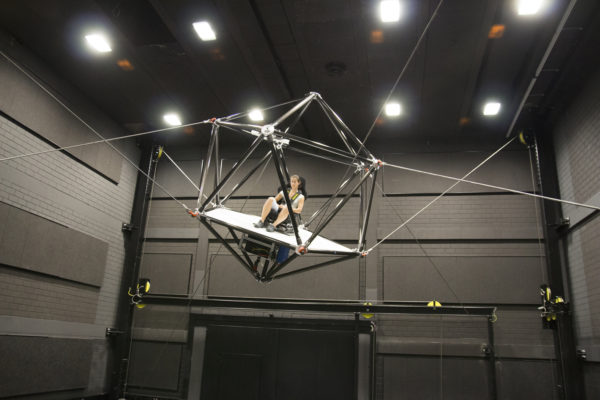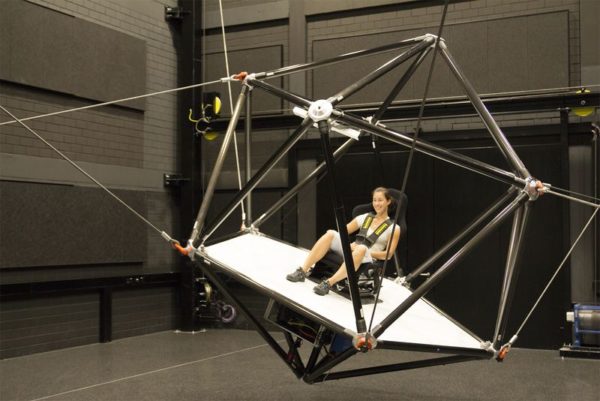CableRobot Simulator Brings Real Movement to Virtual Reality

Taking an extreme virtual ride – say a virtual roller coaster ride – on a VR headset can be pretty extreme even when just idly sitting while watching the action go. But when you could put on that VR headset, have the same exact ride, and be on a precisely moving platform that reacts on what’s on screen, the experience can redefine extreme on an entirely different way.
Researchers at Germany’s Max Planck Institute for Biological Cybernetics (MPI) in Tübingen have teamed up with the Fraunhofer Institute for Manufacturing, Engineering and Automation to create a robot that simulates motion for virtual reality environments. Called the CableRobot simulator, it comprises of a platform that is safely tucked inside a fiber roll cage, which is made of very lightweight carbon. The platform can seat a single person with or without a VR headset.

A lot of engineering went into the mechanics of the CableRobot simulator. The platform is operated by several actuators which work parallel with each other. A system of cables regulates these actuators. The fiber roll cage in the system is suspended by eight cables in a 16.4 feet by 16.4 feet by 26.2 feet area. Each of the cables is suspended from each corner in the space and is powered by a robust motor. CableRobot has a wireless VR system on board. The exposed pod is able to tilt, bank and move with an acceleration of up to 1.5g in response to the VR experience. For now, the CableRobot simulator is aimed to serve a handful of practical applications, especially in industries. According to the researchers working on the robot, it has ample space to fit in aircraft cockpit training equipment which can be used to flight simulation purposes. In addition, researchers also see potential for the CableRobot in the field of neurological research. Heinrich Bülthoff, the CableRobot’s lead researcher at Max Planck Institute said, “This simulator offers us entirely new possibilities for studying motion perception with possible applications in neurological research into balance disorders.”
Its initial target use is mainly for industries, but VR enthusiasts are hopeful that the CableRobot simulator will be developed to adopt video games such as racing games which demands physical movements in order to provide a realistic gaming experience in VR. Being in the prototype stage, CableRobot simulator still has a lot to go through, and it is still a matter of time until this robot could have its place as one of the future VR arcade attractions to watch out for.
For more information on the CableRobot simulator, please visit the following websites:
http://www.ipa.fraunhofer.de/en/cable-driven_parallel_robots.html
http://www.aol.com/article/2015/09/23/this-insane-cable-robot-simulator-lets-you-experience-vr-in-mid/21240003/
http://www.bbc.com/autos/story/20150922-the-worlds-greatest-gaming-gadget

